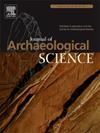地中海商业相关物种:从晚更新世到工业革命的视角
IF 2.6
1区 地球科学
Q1 ANTHROPOLOGY
引用次数: 0
摘要
地中海是世界上第二大生物多样性热点地区,自史前时代以来,地中海就受到了多次环境变化和人类活动的影响。我们对已发表的关于这些影响的性质和程度对古代地中海海洋生态系统的文献进行了系统回顾。我们的目标是概述目前的知识状况,并确定在工业革命(1850年)之前的13万年里,气候和人类活动对地中海海洋哺乳动物、鱼类和软体动物的商业相关物种的影响的研究差距。在大多数已审查的出版物中,物种被用作过去气候条件或人类生存策略的指标。然而,在量化它们对海洋生态系统的影响方面,研究仍然存在空白。根据我们的结果,我们确定了时间和空间以及功能组的数据趋势。现有的资料主要来自全新世,而不是晚更新世,这反映了记录的异质性。亚得里亚海在分区域中的代表性不足,这可能表明分区域之间可获得的数据存在差异,而不是实际缺乏信息。对海洋哺乳动物的研究少于对鱼类和软体动物的研究。尽管缺乏进行研究的标准化指导方针和随后的信息变异性,但这项工作可以为研究地中海过去环境和人为影响的研究演变的重要性提供新的见解。需要平衡研究工作,以检查海洋生态系统中具有经济和生态价值的物种。我们还强调需要统一的方法来收集数据在一个可用的格式后验研究。本文章由计算机程序翻译,如有差异,请以英文原文为准。
Commercially relevant species in the Mediterranean Sea: A perspective from Late Pleistocene to the Industrial Revolution
The Mediterranean Sea is the world's second-largest biodiversity hotspot and has been impacted by several environmental changes and human activities since pre-historic times. We present the results of a systematic review of the published literature on the nature and extent of these impacts on the ancient-historic Mediterranean marine ecosystems. We aim to provide an overview of the current state of knowledge and identify research gaps about climate and human-activity impacts on commercially relevant species of marine mammals, fishes, and molluscs in the Mediterranean Sea over the last 130 thousand years until the Industrial Revolution (the year 1850). In most of the reviewed publications, species were used as indicators of past climatic conditions or human subsistence strategies. A research gap remains, however, in quantifying their effects on marine ecosystems. Based on our results, we identify data trends in time and space and by functional group. Data are available primarily from the Holocene rather than the Late Pleistocene, reflecting a heterogeneous availability of records. The Adriatic Sea is underrepresented among subregions, which may indicate variability of accessible data between subregions rather than an actual lack of information. Marine mammals were less studied than fishes and molluscs in the three subregions. Despite the lack of standardised guidelines to conduct studies and the subsequent variability in information, this work can provide novel insights into the importance of studying the evolution of research focused on past environmental and anthropogenic impacts in the Mediterranean Sea. Research efforts need to be balanced to examine both economically and ecologically valuable species in the marine ecosystem. We also reinforce the need for uniforming approaches to gather data in a useable format for posterior research.
求助全文
通过发布文献求助,成功后即可免费获取论文全文。
去求助
来源期刊

Journal of Archaeological Science
地学-地球科学综合
CiteScore
6.10
自引率
7.10%
发文量
112
审稿时长
49 days
期刊介绍:
The Journal of Archaeological Science is aimed at archaeologists and scientists with particular interests in advancing the development and application of scientific techniques and methodologies to all areas of archaeology. This established monthly journal publishes focus articles, original research papers and major review articles, of wide archaeological significance. The journal provides an international forum for archaeologists and scientists from widely different scientific backgrounds who share a common interest in developing and applying scientific methods to inform major debates through improving the quality and reliability of scientific information derived from archaeological research.
 求助内容:
求助内容: 应助结果提醒方式:
应助结果提醒方式:


